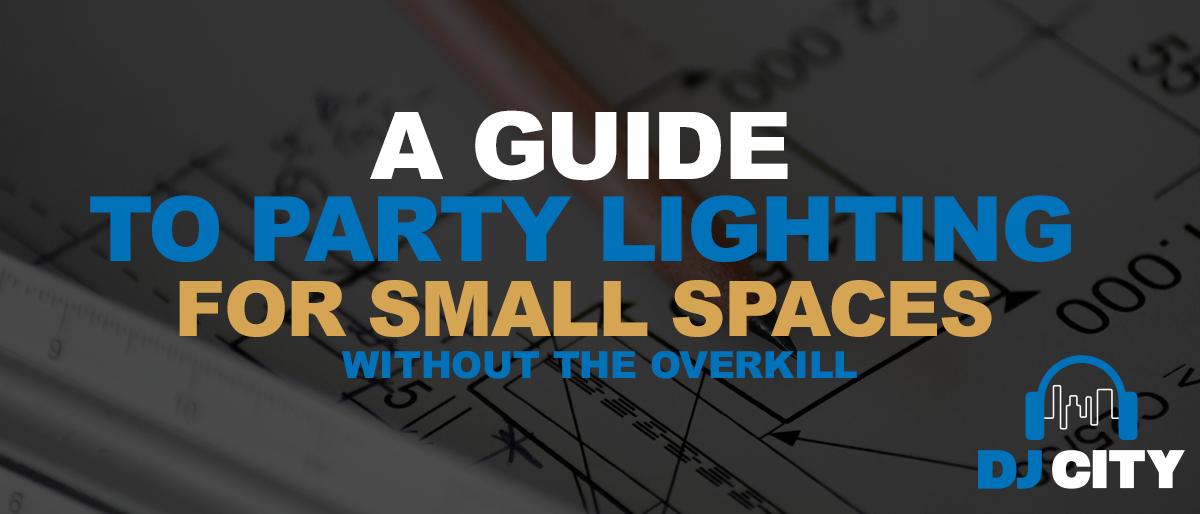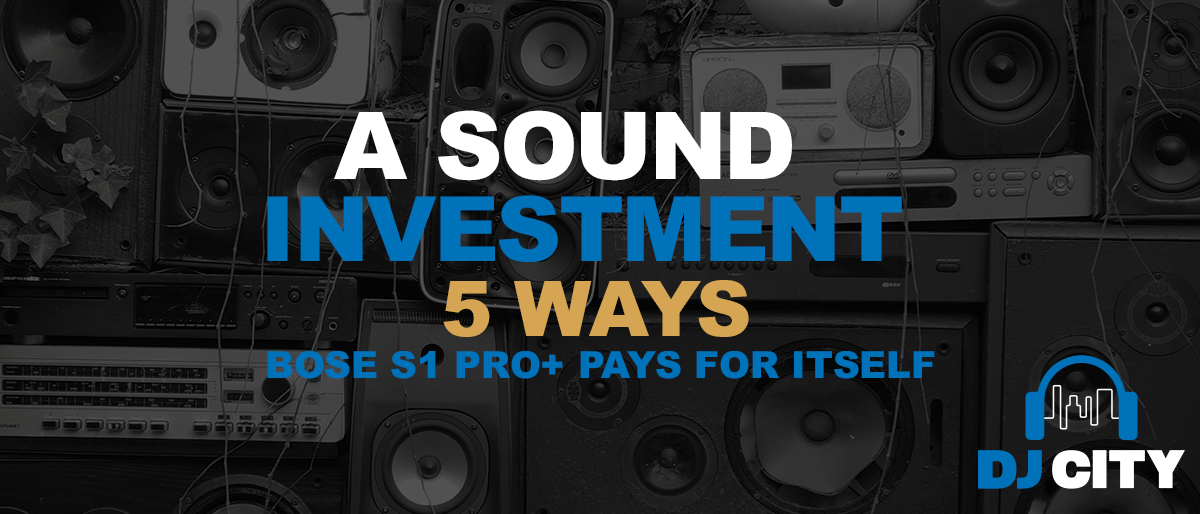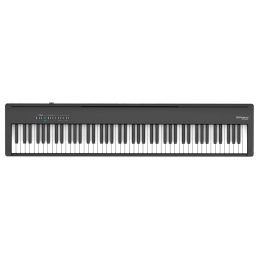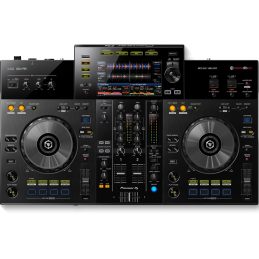
Top Affordable Headphones for DJs: Sound, Comfort & Durability
This is a well-rounded comparison of budget headphones that is packed with all the info you’ll need you to know when it comes to purchasing your set. You’ll find out what you are looking for in your headphones and how much you actually need to spend. Because being on a budget shouldn’t stop you from making beats.
You should have some free or affordable DAW installed after last weeks article and be making sounds whenever you can. It’s time to hear all those frequencies clearly!
Headphones are the next piece of equipment that will make it easier to hear what you’re creating, more specifically studio headphones. I’m sure you already own a set of headphones and these are great to get you started. What studio headphones offer is that you will be better at making music faster, there are many sets of budget headphones out there that will enable your progression as a producer.
Everyday headphones typically headphones colour the sound that you are hearing, they are made to make music sound great. In the case of making your own music that isn’t exactly what you need.
For production headphones that to produce sound with no colour, know as a flat response or transparent tone are what you are looking for.
Whether your headphones can offer you a transparent tone, is important as they are allowing you to hear the music as it really is.
This transparency can be referred to as a natural, accurate sound with a flat response.
Ultimately you don’t want big booming bass or peaks in other frequencies – you want the whole sound to be well balanced. This is so that you know exactly what you are producing. This is what makes studio headphones sound a bit odd to the general consumer.
Your production headphones don’t have to break the bank if you know what you are looking for you can get quality sound and hear all the frequencies.
This comparison on budget headphones has been written so that you can have everything you need, with what you are able to spend.
Whether you have pro headphones or budget headphones for your production the specs and parts are all going to be the same.
Here’s a quick explanation of the specs that are generally mentioned and why they are important.
- Type
- A description such as “closed-back dynamic” or “active noise-canceling.” This may be the first spec you want to look at when selecting headphones because it indicates the style or function of the headphone.
- Driver Diameter
- Headphone sound quality depends to a great extent on the size of the diaphragm, which is indicated by the driver diameter: the larger the diameter, the better the sound quality tends to be. Most drivers for earbuds are 13.5–15.4 mm in diameter, Over-ear, and On-ear headphone drivers lie in the 30–53 mm range.
- Headphone sound quality depends to a great extent on the size of the diaphragm, which is indicated by the driver diameter: the larger the diameter, the better the sound quality tends to be. Most drivers for earbuds are 13.5–15.4 mm in diameter, Over-ear, and On-ear headphone drivers lie in the 30–53 mm range.
- Magnet
- Sound quality can also be improved by the performance of the permanent magnet in the magnetic circuit. These magnets are often made of ferrite or cobalt, although sometimes more exotic material is used for stronger magnets.
- Sound quality can also be improved by the performance of the permanent magnet in the magnetic circuit. These magnets are often made of ferrite or cobalt, although sometimes more exotic material is used for stronger magnets.
- Voice Coil
- The voice coil fulfills a key role in converting electrical signals into sound. For better sound quality, voice coils are made of a variety of material besides ordinary copper wire, including PCOCC (Pure Copper by Ohno Continuous Casting) and Hi-OFC (a class of oxygen-free copper).
- The voice coil fulfills a key role in converting electrical signals into sound. For better sound quality, voice coils are made of a variety of material besides ordinary copper wire, including PCOCC (Pure Copper by Ohno Continuous Casting) and Hi-OFC (a class of oxygen-free copper).
- Frequency Response
- The range of frequencies that the headphones can reproduce, from the lowest bass frequency to the highest high frequency, expressed as a numeric value. Although the typical audible range is 20–20,000 Hz, inaudible higher frequencies do affect the listening experience.
- Maximum Input Power
- Maximum input indicates the maximum supported power supply for the headphones, measured in mW. This is the peak instantaneous power that may be supplied. It should not be misunderstood as meaning that headphones rated at 2,500 mW (for example) can be continuously powered at 2,000 mW. Moreover, larger values are not necessarily better. As long as the value matches or exceeds the player’s maximum output value, any value is acceptable.
- Maximum input indicates the maximum supported power supply for the headphones, measured in mW. This is the peak instantaneous power that may be supplied. It should not be misunderstood as meaning that headphones rated at 2,500 mW (for example) can be continuously powered at 2,000 mW. Moreover, larger values are not necessarily better. As long as the value matches or exceeds the player’s maximum output value, any value is acceptable.
- Sensitivity
- The level of sound pressure produced by the headphones in response to a 1 mW signal. Measured in decibels per milliwatt (dB/mW). At a given input volume, headphones with greater sensitivity will produce a louder sound. A difference of 3 dB/mW or more is generally considered audible to most listeners.
- The level of sound pressure produced by the headphones in response to a 1 mW signal. Measured in decibels per milliwatt (dB/mW). At a given input volume, headphones with greater sensitivity will produce a louder sound. A difference of 3 dB/mW or more is generally considered audible to most listeners.
- Impedance
- As a value indicating the degree of headphone electrical resistance, this specification mainly represents the voice coil resistance but also includes cable resistance. Measured in ohms (Ω). Choosing low-impedance headphones for low-voltage portable audio players ensures better efficiency.
- As a value indicating the degree of headphone electrical resistance, this specification mainly represents the voice coil resistance but also includes cable resistance. Measured in ohms (Ω). Choosing low-impedance headphones for low-voltage portable audio players ensures better efficiency.
- Weight
- This indicates the weight of the headphones and usually does not include the weight of the cable. This may be an important factor to consider for comfort, especially during extended use.
- This indicates the weight of the headphones and usually does not include the weight of the cable. This may be an important factor to consider for comfort, especially during extended use.
- Cables
- Cables come in various thicknesses and lengths to suit different listening needs. Cables are generally made of 99.5% pure copper wire, but for more efficient signal transmission they may be produced with exceptional material such as oxygen-free copper—whether Hi-OFC, PCOCC (Pure Copper by Ohno Continuous Casting, 99.996% pure copper), or other kinds. Additionally, the cable sheath may be cloth-wrapped or constructed of highly elastic elastomer to help prevent tangling and reduce “touch noise” when the cable is touched.
- Cables come in various thicknesses and lengths to suit different listening needs. Cables are generally made of 99.5% pure copper wire, but for more efficient signal transmission they may be produced with exceptional material such as oxygen-free copper—whether Hi-OFC, PCOCC (Pure Copper by Ohno Continuous Casting, 99.996% pure copper), or other kinds. Additionally, the cable sheath may be cloth-wrapped or constructed of highly elastic elastomer to help prevent tangling and reduce “touch noise” when the cable is touched.
- Connector
- Plugs into the headphone jack of AV equipment or portable audio players. Comes in two main types: standard (6.3 mm) and mini-plug (3.5 mm). Many headphones are equipped with a 3.5 mm mini-plug and include a 6.3 mm adapter.
Two most common types of headphones you’ll find when looking for your studio headphones are closed back headphones and open back headphones.
Open vs. Closed Headphones
Closed back headphones have the drivers sealed in whereas in open back headphones the drivers aren’t sealed in.
The biggest difference between open-back and closed-back or semi-closed-back headphones is isolation. Open-back headphones allow sound to pass through the ear cups. Music listeners use them in quiet environments—at their desks or in their homes—to achieve a listening experience that some describe as “in the world around me” as opposed to “in my head.” Listeners that are looking for an open, airy, spatial feel that isn’t as isolating as closed-back headphones will go for open-back cans. These factors are one of the reasons that they’re popular in professional applications: they can provide what some users feel is a more natural sound.
The “more natural sound” of the open back models can give you a better handle on how a mix is arranged, the airy, clear or spacious feel can give the listener a very accurate idea about where all the sounds are sitting in conjunction with each other. They also offer a comfortable experience for long studio sessions. For this reason, they are often used for mixing.
The main draw to closed-back headphones is that they should eliminate all outside noise, leaving you in a cocoon of your own mix. This means there is minimal to no sound bleed, keeping your mix private. Generally speaking, larger earcups equal more isolation. This immersion in sound provides a good insight into the finest details of whatever project you are working on. The closed back models are often used for recording and sound design the immersion is very handy when using effects so you can very clearly hear the effect you are using. Closed-back headphones are the preferred tool for recording because, as well as driving the sound right into your ears, they will protect you from hearing any ambient instrument sounds or noises.
In the essence of this being a comparison of budget headphones I am going to focus on closed back models as they are traditionally more cost-effective.
What are you looking for?
There are so many headphones out there. So many awesome models out there at different price points, in all categories. It easily could be overwhelming and its relatively easy to overspend.
So, in the process of putting this budget headphone comparison together, I have broken down the points to consider when you are finding the headphones for you. The top factors are;
Performance
The most important aspect of studio headphones is whether they can offer you a transparent tone. We are looking for a flat response with a good range of frequency response. The wider the frequency response the better in this scenario.
Comfort
Comfort is one of the most underrated yet most essential aspects of headphone design. Ultimately, these things are going to be on – or in – your ears for hours at a time, which can inevitably lead to fatigue (i.e. your ears start to hurt, your head starts to ache – neither of which is something you want to experience when working in a studio). This is why aspects such as padding for both the headband and the ear pads are essential here. You will also want something that offers a snug fit but is fully adjustable. Weight comes into the comfort factor as well, you will most likely be wearing your headphones for long periods.
Build Quality
The build quality of a pair of studio phones will largely depend on the price of the headphones. As you may expect, higher-end cans are usually made to last much longer, whereas a budget pair can be less durable. Cables fall under this category also, mid-high end headphones generally have detachable cables allowing for easy replacement.
Budget Headphones for the tightest of budgets:
BEHRINGER HPS5000 STUDIO HEADPHONES
If you are in need of a set of truly budget headphones then this set from Behringer act way above their price point. The performance from such an affordable set of headphones is quality, featuring a wide 20-20000 Hz frequency response range. They offer fantastic bass notes mixed with crystal clear treble tones from The 40mm drivers. Surprising sound quality is the result.
The overall design is rugged and durable, and they are a wallet-friendly set of headphones, you really can’t go wrong with the Behringer HPS5000.
Features
Ultra-wide frequency response
High-definition bass and super-transparent highs
Ultra-wide dynamic range
High-efficiency cobalt capsule
Single-sided coiled cord with oxygen-free copper wires
Optimized oval-shaped ear cups
Ultra-rugged headband construction
High-quality components and exceptionally rugged construction ensure long life
Budget headphones for when you have a little More To Spend:
The Sennheiser HD 280 Pro is a popular “starter” headphone for people ready to venture into the world of high-end headphones. The HD 280 isn’t strictly a “noise-cancelling” set, but they do give you 32db of attenuation, which means they significantly reduce outside noise and give you a more isolating sound. There’s plenty of padding in the set, helping to up the comfort level. The cable isn’t detachable, it is a user replaceable part though. What studio are headphones are used by the pros? The 280’s Pros! Both Diplo and Knife Party stand by these cans. For a set of budget headphones these have really stood the test of time and many producers who started with a set of 280’s still use them.
An excellent set of headphones from Sennheiser, who have designed excellent headphones since 1945.
FEATURES:
Closed, dynamic stereo headphones
Accurate, linear sound reproduction for critical monitoring applications
Optimum impedance ensures universal compatibility
Space saving design features collapsible, rotating earcups
Up to 32 dB of ambient noise attenuation
Neodymium magnets for high maximum SPL
Single-sided, coiled cable with 3.5 mm mini jack with locking 1/4″ adapter
Comfortable for long mix sessions
Rugged construction with user-replaceable parts
Color: black
Wearing style: Headband
Frequency response (Headphones): 8 – 25000 Hz
Sound pressure level (SPL): 113 dB
THD, total harmonic distortion: 0,1 %
Contact pressure: 6 N
Ear coupling: circumaural
Jack plug: 3,5 / 6,3 mm stereo
Connection cable: Coiled Cable (min. 1.3m / max. 3m)
Transducer principle: dynamic, closed
Weightw/o cable: 285 g
Nominal impedance: 64 Ω
Load rating: 500 mW
Features
Cutting-edge engineering and robust construction
40 mm drivers with rare earth magnets and copper-clad aluminium wire voice coils
Tuned flat for incredibly accurate sound monitoring across the entire frequency range
Circumaural design contours around the ears for excellent sound isolation in loud environments
90° swivelling earcups for easy, one-ear monitoring
Professional-grade earpad and headband material delivers more durability and comfort
Collapsible for space-saving portability
Detachable cable (includes 1.2 m – 3.0 m coiled cable and 3.0 m straight cable)
For professional studio tracking and mixing, as well as DJ monitoring
Specs
Frequency Response: 15 – 24,000 Hz
Cable Length: Includes two interchangeable cables: detachable 1.2m – 3m coiled cable and detachable 3m straight cable
Magnet: Neodymium
Driver Diameter: 40 mm
Voice Coil: CCAW (Copper-clad aluminum wire)
Sensitiviy: 98 dB
Maximum Input Power: 1,600 mW at 1 kHz
Weight: 240g without cable and connector
Maximum Input Power: 1,600 mW at 1 kHz
Impedance: 35 ohms
ATH-M40x vs
ATH-M50x
Both headphones are tuned very differently. The m50x has enclosures, pads, and tuning designed for a slightly aggressive sculpted response. The M40x is designed around a flatter more neutral signature. In both of these cases the enclosure of the cup and the type of padding used to affect the sound way more than the size of the driver. Many people swear by the M40x for its transparent frequency response at the budget headphones price point. If you want to DJ with them as well, maybe the M50x’s are for you.
Another popular contender is in the KRK range.
These are based on Krk Monitors which are very popular among many producers. Personally, I think they are the least transparent of the headphones on the list. If you are producing Hip Hop or EDM they could be for you, or if you intend in owning a pair of krk’s one day. If you want a set of headphones that will push you towards creating BIG-sounding mixes then the krk’s are tuned with a large bottom end with less brightness to them.
Features
Lightweight comfortable headphones, for those long sessions.
High-efficiency Neodymium 40mm driver.
A very accurate, natural and wide frequency response.
Large dynamic range with extremely consistent low-distortion detail and clarity.
Extended bass frequency definition without boominess that reproduces the low end of your music accurately and clearly.
Transparent reproduction of high-frequencies, resulting in highly accurate imaging.
Highly durable 2.5M single-sided, oxygen-free copper straight cable.
Replaceable cable, head, and ear cushions to ensure long product life
SPECS
Closed back, circumaural
Cable: 2.5 m 99.99% OFC detachable
Ear Cushion type: Acoustic cellular foam
Headpad Finish: Leatherette
Ambient Noise Isolation: up to 26 dBA
Tranducer: 40mm, neodymium
Power Handling Full Range: 1000mW
Nominal Impedance: 36 ohms
Frequency Response: 10Hz to 22KHz
Sensitivity (1mW): 95 dB SPL
Calculated Max SPL: 122 dB SPL
Connector: Gold-plated stereo 1/8″ (3.5 mm)
Finish: Black impact resistant plastic
Weight: 210 grams
If you are planning on DJ-ing with your headphones as well Reloop has engineered there first set of studio headphones that are a Studio/DJ Hybrid.
What makes the SHP-8 different is a switch that let’s you boost the low frequencies by +3 dB or +6 dB. Which according to Reloop makes it “easy to adapt the SHP-8 to different applications” – that means studio to booth and back again, basically.
German made, rock solid and endorsed by loads of well-respected artists. They will be released in Australia and are definitely worth a listen before you make your final decision.
Reloop SHP-8
FEATURES
- Professional over-ear headphones for studio and monitoring application
- Closed-back with passive bass enhancement
- Neutral and detailed reproduction of the whole frequency range
- Bass Accentuation Technology: Individual adjustment of the low end frequency range for each earcup (neutral/+3 dB/+6 dB)
- Precise and clear bass reproduction, also ideally suited for DJing
- Rotatable earcups for comfortable handling
- Extendable aluminium headband adapts perfectly to the shape of your head
- Highly flexible headband allows one-ear monitoring as well
- Comfortable padding composed of memory foam and premium protein leather with excellent humidity absorption characteristics – even during a long session
- One-sided cable routing for flexibility
- Replaceable, removable cable connection
- 3.5 mm stereo jack cable with gold-plated plugs and spring-loaded bend protection
- Sturdy high-quality construction containing aluminium with a gunmetal finish
- Velvet bag and gold-plated 6.3 mm stereo jack adapter
Specs
-
- Frequency range: 10 Hz – 20 kHz
- Max. input power: 20 mW
- Impedance: 32 Ohm +/-15 %
- Acoustic pressure: 96 dB +/-3 dB at 1 kHz
- Driver unit: 40 mm
- Speaker power: 10 mW
- Connections: 3.5 mm jack/6.3 mm adapter (gold-plated)
- Weight: 237 g
More To Spend… Isn’t this comparison about budget headphones?
Yes! This is a budget headphones comparison. Don’t spend any more than what the cans above cost.
My advice is to; Save your pennies for the next piece of gear!
The headphones I have mentioned in this article have solid quality and all fall into the budget headphones category while being appropriate for any stage of your production career. Don’t be put off by the fact the affordabilty… Each set is engineered to give a transparent response, be comfortable for hours on end and be tough enough to see you through to the next stages of your production journey.
Even with all this info in mind, everyone is different and no one can choose for you. Your headphones choice is very personal, I recommend taking music you are working on and music you listen too into a store and letting your ears decide for you.
Have fun!









